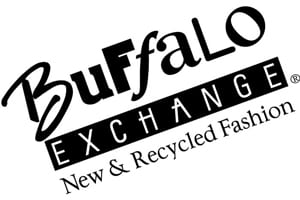 High fashion and vintage apparel retailer Buffalo Exchange has thrived for 40 years using a simple buy/sell/trade model. With locations in 17 states, Buffalo Exchange serves customers in the trendiest metropolitan areas with unique one-of-a-kind products sourced from small suppliers and purchased from the community.
High fashion and vintage apparel retailer Buffalo Exchange has thrived for 40 years using a simple buy/sell/trade model. With locations in 17 states, Buffalo Exchange serves customers in the trendiest metropolitan areas with unique one-of-a-kind products sourced from small suppliers and purchased from the community.
For most of its history, the chain relied upon a simple business model where each store maintained relative autonomy and processed transactions using calculators and cash registers.
As it grew, the scale became unwieldy for regional and corporate managers. With over 25,000 unique SKUs and an average inventory turnover rate of 30 to 45 days, Buffalo Exchange’s leadership team knew it was time to automate or face becoming buried in a mountain of disjointed analog data that would not be helpful for strategic or operational decision making.
The journey to modernize POS transactions led the company to an immediate roadblock: the buy/sell/trade model had not been figured into retail management software aimed at mid-sized retailers.
“The closest thing we could find to what we needed in an off-the-shelf solution were platforms that could handle consignment, but our buy counters mostly deal in cash purchases to procure merchandise,” explains Buffalo Exchange co-owner Rebecca Block. “Since each item we buy is unique and receives its own SKU and bar code, we needed a robust system that could handle that kind of volume.”
Finding a POS platform that could accommodate the company’s unique needs proved so difficult that Block decided to contract a software firm to create a fully customized solution. After months of development and testing, the system launched in a limited number of pilot stores before crashing under the pressure. While the software successfully addressed the singularity of Buffalo Exchange’s operational model, it could not handle the necessary scale for a retailer with national reach.
“It was incredibly frustrating to spend large amounts of time and money on a system only to watch it ultimately fail, but remaining analog was simply not an option, so we went back to the drawing board,” says Block.
Working closely with a small team from Buffalo Exchange, Celerant Technology developed additional functionality for its Command Retail platform that addresses every aspect of the retailer’s needs and is fully scalable. Using this customized system, Buffalo Exchange merchandise buyers are now able to calculate buy prices, generate unique SKUs, and print bar codes in real-time for any item they purchase.
When the item is sold, the same information is referenced and the accounts are instantly reconciled, providing managers with instant intelligence on which items turnover best. Additionally, each purchased item is connected to a record of the seller in the company’s CRM database.
Not only does this allow Buffalo Exchange to keep track of a range of customer metrics including who the best sellers are, it also keeps the store in legal compliance. Originally written to govern pawn shops, some states have strict regulations on customer record keeping that applies to any retailer that deals in the cash purchase of goods.
Automated sales and inventory data also provides immediate access to aggregated operational information across all locations. At any time, executives can determine what types of items are selling best in which locations and adjust overall purchasing strategy accordingly at the micro or macro level. Similar metrics provide insight into employee performance, and managers can identify which buyers select merchandise that sells most quickly or at the highest margins.
Buffalo Exchange has also realized significant savings from automating boot cycles. Employee time bookkeeping is tied into the software, and timed boot-up prior to store opening hours allows workers to clock in as soon as they arrive to work instead of waiting for the system to initialize. This feature alone has saved the company more than $300,000 over a two year period.
“The benefits realized from automating retail management are staggering and once you have it, you can’t imagine ever going back,” says Block. “Since implementing this system, we have added five sites and haven’t had to expand our accounting staff at all. That’s about the best ROI I could ask for.”
Ian Goldman in President and CEO of Celerant Technology.
